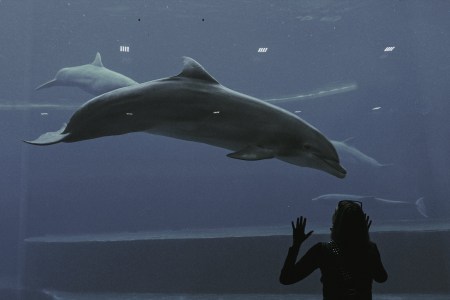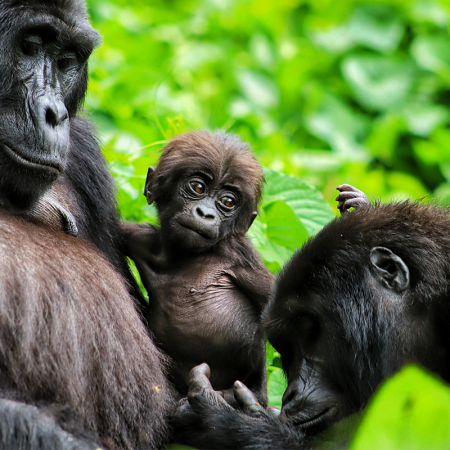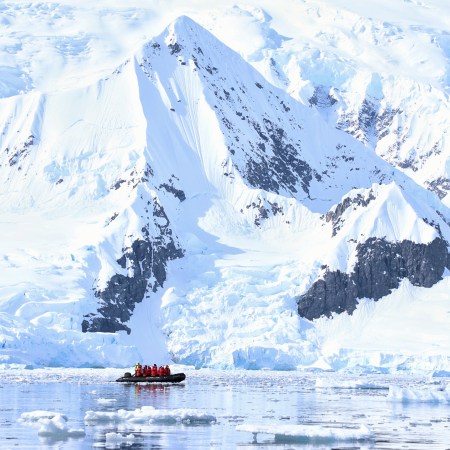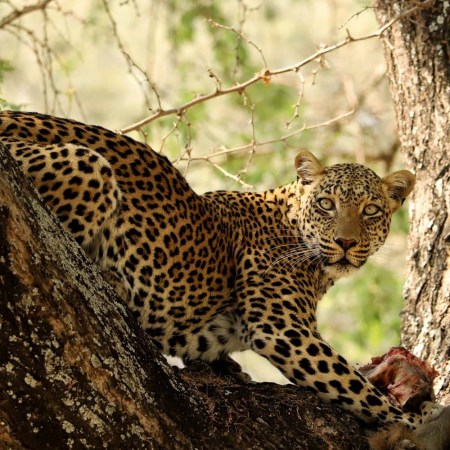Most people have seen the images these days: a smiling dolphin in crystal clear water sidled up next to grinning travelers in swimsuits and sunscreen. You can find them everywhere, from roadside billboards to magazine ads to social-media feeds. If you’ve been on a cruise in the last decade, their visages have greeted you at many ports. But there is a lot of uncertainty and plenty of worries lurking just under the surface of that seemingly innocent scene.
The captive dolphin industry is a financial powerhouse that generates billions. But a growing chorus of scientists, trainers and advocates is calling for it to end. I recently did a deep dive into the industry and what I found was distressing and unsettling. There are at least 2,600 dolphins in captivity around the world, many bred solely for show. Held in facilities that offer a fraction of the space their wild brethren live in, many are forced to interact daily with the paying public.
There is a better way to see these magnificent creatures: in the wild. There, you can marvel at their beauty while knowing you are not contributing to an industry many decry. Here are seven places to see dolphins with reputable operators that put the welfare of the animal first.

California: Condor Express
The Channel Islands National Marine Sanctuary and National Park are just off Southern California’s coast. Encompassing over 1,470 miles of ocean waters, it is at the junction of two major ocean currents. The sanctuary is home to a thriving aquatic ecosystem, one of the premier whale-watching spots on the West Coast and one of the densest populations of dolphins in the world.
One of the best ways to see them is to book a seat on the Condor Express Whale Watching Tours that depart from the Santa Barbara docks daily. While out in the Santa Barbara Channel on their 75-foot high-speed catamaran in search of whales and to tour the Channel Islands, you will be treated to massive megapods of dolphins. Sightings numbering in the thousands as vast waves of dolphins churn the Pacific Ocean waters into a frothy mess are common. The dolphins love stampeding towards the ship to ride in its wake. It is an unforgettable sight.

British Columbia: Vancouver Island Photo Tours
Sitting just off the northern tip of Vancouver Island, Canada, Broughton Archipelago Provincial Park covers the waters and remote islands of a stretch of unspoiled British Columbia coastline. Accessible only by boat or float plane, it is pure wilderness that can transport you back in time. The scenery alone is worth a visit, but the stars of the show are the abundant wildlife, including bears, eagles, whales and dolphins.
Rolf Hicker is a veteran wildlife photographer who operates a sustainable tour company in the area called Vancouver Island Photo Tours. A certified marine mammal and bear-watching guide, he takes small groups of no more than four people on his custom-designed boat for full and half-day tours of the area. His Whale Watching Broughton Archipelago trip takes you out on the water for 6-8 hours and surely will result in stunning photos and memories.
Bottled-Up Bottlenoses: The Ugly Truth Behind Our Love of Dolphins
Dolphins are the smiling ambassadors of the sea, but a growing chorus of scientists, trainers and advocates say it’s time to end their captivityBahamas: Wild Dolphin Project
In 1985, Dr. Denise Herzing started the Wild Dolphin Project to observe and track a few specific pods of Atlantic spotted dolphins and bottlenose dolphins in the crystal clear waters of the Bahamas. After observing the pods for four generations, she is acknowledged as one of the foremost experts on dolphin behavior in the wild today.
The 100 days she spends on the water every summer is crucial to her research. To raise much-needed funds and spread her message that dolphins should only be observed in the wild, she allows up to six people to join her team for nine-day trips each summer. This is no pleasure cruise; while on the boat, you act as crew and actively participate in research. That may include diving in the water with their scientists in snorkel gear to observe, not swim, with the dolphins “in their world, on their terms.” To be considered for a slot, you must be a member of TWDP.

South Carolina: Outside Hilton Head
As the second-largest barrier island on the Eastern Seaboard, Hilton Head Island is part of a vast array of salt marsh estuaries in the Port Royal and Calibogue Sounds and surrounding South Carolina Lowcountry. A veritable breeding ground for all types of marine life, the waters are home to alligators, manatees, hundreds of species of birds and over 170 full-time Atlantic bottlenose dolphins, whose numbers swell in the summer with migratory dolphins.
You can easily see them from shore, but if you want a more intimate viewing experience, you can either book a trip by kayak or boat with Outside Hilton Head. Due to the protected nature of the waters, they are home to numerous nursery pods of females and their calves. The area is also one of the few places in the world where strand feeding is observed, where dolphins run their prey onto shore and snatch it up.

Hawaii: Sea Quest
Rising from depths of over 18,000 feet, the Hawaiian Islands act as a refuge for a vast swath of marine life. Protected by an array of reserves, including the Hawaiian Islands Humpback Whale National Marine Sanctuary, there is much to be seen in a visit. Reefs teem with colorful fish, massive manta rays and immense Hawaiian green sea turtles, and at least 24 species of cetaceans (whales and dolphins) are found in the surrounding waters.
Sea Quest Hawaii has been taking small groups out on the waters around Kona since 1988. Their Premium Morning Snorkeling Tour allows you to swim on two reefs, possibly take a dip with turtles and explore lava tubes. While traveling, you will cruise through waters home to Hawaiian spinner, bottlenose dolphins and humpback whales during the winter months.

Azores: Terra Azul
The Azores archipelago sits in the middle of the Atlantic Ocean and was once one of the largest whaling hubs in the world. Those days are long gone; these days, it is home to one of the world’s largest marine sanctuaries and is regarded as one of the best places in the world for dolphin watching. Huge vigia towers that were once used for spotting whales now house expert dolphin spotters who work with tour companies to locate broad pods. Twenty-eight species of dolphins and whales can be found in its waters, including bottlenose, common and Risso’s dolphins, alongside migratory pilot whales and Atlantic spotted dolphins.
For over two decades, Terra Azul has been taking people out in Zodiac powerboats with a marine biologist guide to experience the bountiful marine mammal life in the waters surrounding the Azores. During their season (mid-October to mid-April) they offer people the chance to get in the water with dolphins on their Swim With Dolphins trip. By only allowing two people into the open ocean water at a time from a distance, they minimize any stress on the mammals and let them choose whether they wish to interact with the swimmers.

Scotland: Hebridean Whale and Dolphin Trust
The Hebridean Whale and Dolphin Trust (HWDT), based on the Isle of Mull in the heart of the Scottish Hebrides, is focused on using citizen science to further the protection of marine life. For over two decades, they have focused on educating people about conserving the region’s whales, dolphins and porpoises. One of the critical things they do is provide research and data to the Scottish government on the status of their waters and the health of their seas.
Every year, from April until mid-October, they take six volunteers on research expeditions on their sailboat, the Silurian, along the west coast of Scotland. The expeditions, which last seven to twelve days, are no party cruise. Working alongside a four-person HWDT crew, participants will help collect visual and acoustic data of every cetacean species encountered and assist in all other daily tasks onboard. The journey through the rugged Scottish coast alone makes this a memorable trip.
This article was featured in the InsideHook newsletter. Sign up now.

























